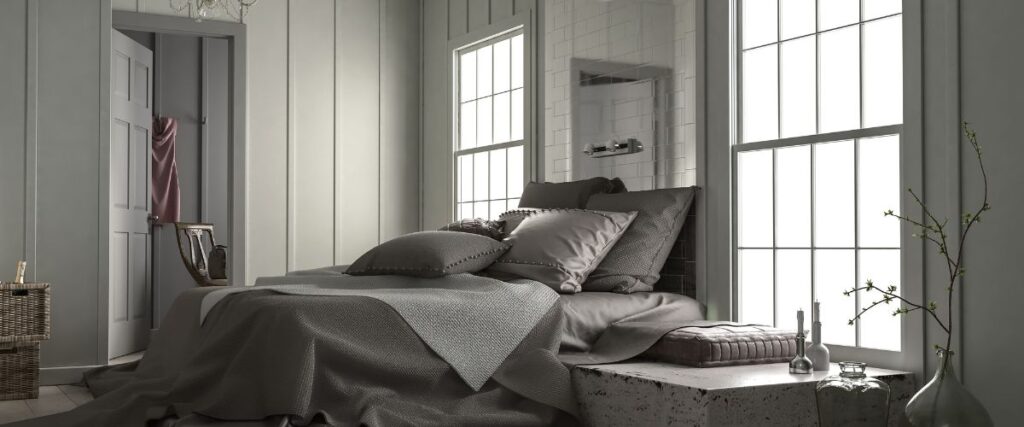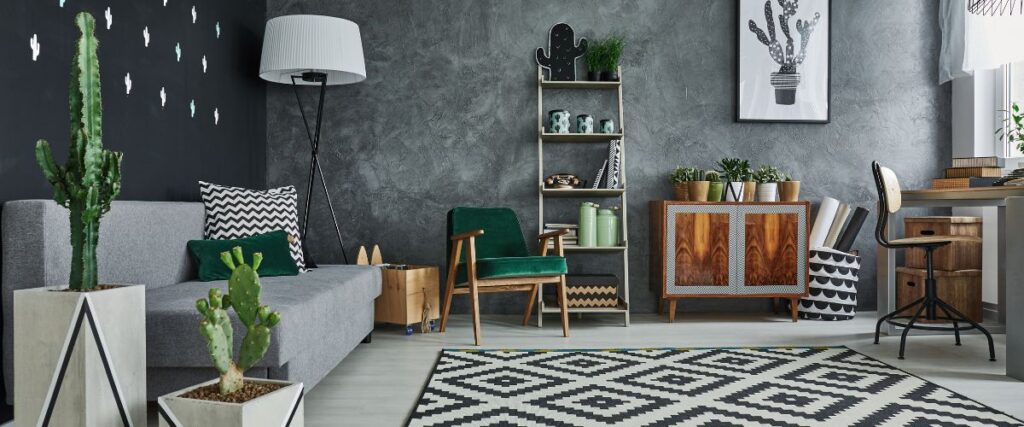Whether you’re painting a new space or freshening up your existing home, the perfect paint color can make all the difference. Choosing the perfect color is a critical part of any home makeover. After all, it’s one of the most visible elements of your interior design. However, selecting the right color can be complex and challenging at times.
You want to make sure that you select a paint that will complement your home but also stand out in a good way. For example, you wouldn’t want to pick a neutral that blends into the background rather than stand out as an accent piece. Here are some helpful tips on selecting the perfect paint color for your home.
Know Your Colors
Painting a room is almost like putting together a puzzle where the color of the walls will be the final piece. You need to consider other aspects of the room, such as the following:
- Flooring
- Furniture
- Windows
- Ceiling
- Lighting
- Decor items.
You’ll also need to consider how all of these elements will work together and what they’ll bring to the space. When selecting your color palette, it’s essential to keep a few things in mind.
First, what are your favorite colors? Which are the ones that you gravitate towards more often than not? That can help you narrow down your choices and narrow down your search.
Next, what mood do you want to evoke in the room? Is it casual and laid back? Or are you hoping for something more sophisticated and refined?
It’s also important to consider which season the room falls in. While you may not want to change your color seasonally, you can change the décor to bring the color out differently each season.
And lastly, what kind of look are you hoping to achieve with your room makeover? Do you want the room to look classic, or is the point of the makeover to make your space feel more modern? Have a goal in mind when picking out your paint colors.
Finding the Perfect Paint Color Schemes
A color scheme is a group of colors selected to complement each other and often used together in a design. Although the specific colors in each scheme can vary, several common color schemes have been used in interior design throughout the years. These include monochromatic, analogous, and complementary. Understanding the different color schemes and how they work together can help you select the right paint colors for your home.
Monochromatic Color Scheme
A monochromatic color scheme is when you select a range of hues derived from a single color; for example, a blue-based red or a yellow-based blue. In these examples, all the paint and décor colors will come from a single color but offer a wide variation in the hues.
An example of this can be seen in the classic black and white color scheme, where the two colors are derived from opposite ends of the color spectrum (black being the absence of color and white being the entire presence of all colors).
Analogous Color Scheme
An analogous color scheme is when you select colors adjacent to one another on the color wheel—for example, blue, violet, and red. The trick with choosing an analogous color scheme is not to go too heavy on one color. Your ultimate goal with this color scheme is to balance out the two colors on the ends while using the middle color as an accent color.
Complementary Color Scheme
A complementary color scheme is when you select two colors that sit opposite each other on the color wheel. For example, red and green or blue and orange.
The trick with these color schemes is to ensure you don’t go too heavy on color, as you don’t want the room to appear too bright or bold. However, these are easy to use when your goal is a bold statement while still maintaining a room’s balance.
Quality Paint Matters
While selecting a paint color that appeals to you, it’s also essential to consider the quality of the product you’re using. After all, you don’t want to repaint your home in a couple of years because you selected a poor-quality paint that faded or chipped easily.
You also don’t want to go through the hassle of repeatedly repainting because you selected the wrong paint color for your space. It’s crucial to choose a paint brand that is reliable and known for producing high-quality products.
There are many different brands to choose from that offer additional features and benefits. If you’re unsure which brand to select, it’s best to consult with a professional painter and have them walk you through all of your options. Having a professional painting company paint your home’s exterior allows you to get the best quality paint and the perfect paint color in one experience.
Decorating Goals – Current and Future
When considering paint colors, it’s important to consider your overall decorating goals for the room. Have you decorated the room before? If so, what kind of colors did you select for the space? Was it a neutral or bold color?
What about the furniture and decor items? If you’ve already furnished the room, staying consistent with the existing colors and elements is best. If you’re in the process of decorating a room from scratch, it’s recommended that you take your time and select colors that work well together.
Also, consider the amount of natural light that enters the room, as this can help you to select a color palette that’s right for the space. Using sample colors can give you an idea of how each shade of paint will look in the room and give you time to decide which is best for you.
Lighting Conditions
The lighting conditions in your room can play a critical role in selecting the right paint colors. After all, you don’t want to end up with a space that is too dark or too bright due to poor lighting. This can result in you selecting colors that don’t work with the lighting in the room and picking colors that are too dark or too light.
There are a few different ways to approach selecting the right paint colors for your space based on the lighting conditions in the room. One option is to choose paint colors based on the room’s light source, and another is to select paint colors based on the actual surfaces within the room. Paint sits differently on wood than on drywall or plaster, for example.
How To Select The Final Color
When selecting the final paint color for the room, pick a sample near the middle of the color wheel. This will allow the paint color to be seen both indoors and outdoors, which will help you to determine if the color is the right fit for your room.
When selecting a color, the room’s existing elements and furniture must be kept in mind. For example, if there are windows in the room, what color are they painted? Is the wood flooring dark or light? What color is the ceiling? These elements will help you to select the right paint colors for the room.
Also, if you are selecting a color to paint the exterior of your home, make sure that it is approved by your HOA, as many Home Owners Associations have specific color guidelines in place. If you are unsure whether your HOA has color guidelines, it’s best to ask and find out or work with an experienced HOA painting company in the area.
Let JLM Painting Help You Select the Perfect Paint Color for Your Home
Choosing the perfect paint color is crucial when designing a room. After all, paint can transform a space in a matter of days. And while there are many options to choose from, it’s essential to narrow down your choices and select colors that work well together and compliment the room.
When selecting paint colors, it’s important to consider your favorite colors, the room’s lighting conditions, and your overall decorating goals. These tips will help you select the perfect paint colors for your home and create a space that is uniquely you.
If you want help selecting the perfect paint color for any part of your home, contact the experienced painters at JLM Painting. We can come out, give you a free quote, then do the entire job for you. We can also help you pick out the colors that will help your space shine if you are having trouble deciding.



